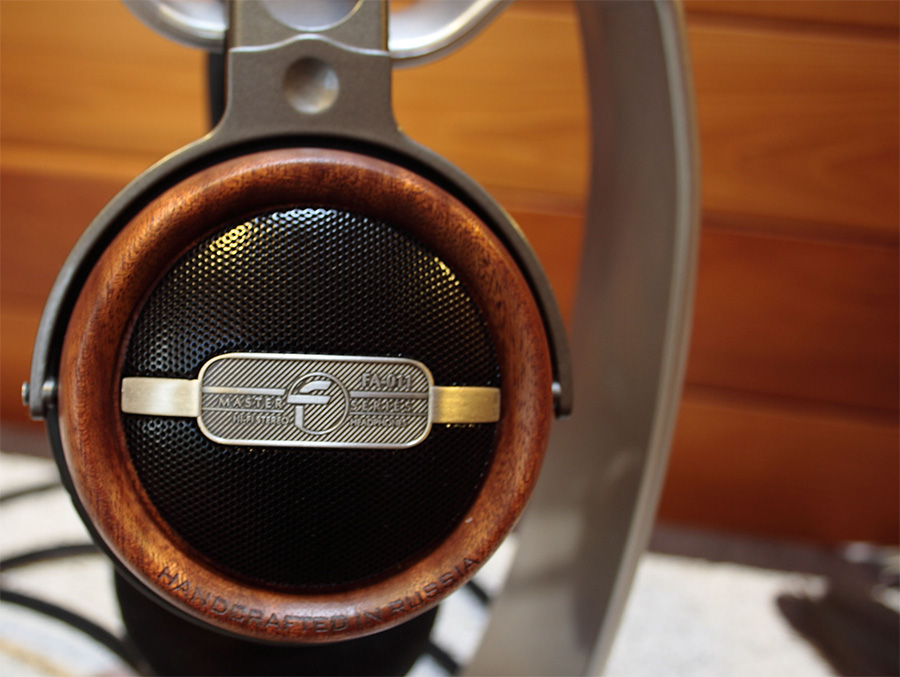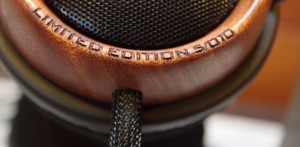The Fischer Audio FA-011s have an existing following of fans. They’re known for their price / performance ratio and their bass performance in particular. So what happens when they create a limited edition version of the famed FA-011?
Specifications
- Style: Open
- Frequency response: 18 – 22,000 Hz
- Sensitivity: 98 dB
- Impedance: 160 ohm
- Cable length: 2.5m
- Connector: 3.5mm
Upgrades over the standard FA-011
- Exotic timber cups
- Upgraded, shielded cable
- New logo badge
- Velour pads (more on this later)
- APE-03 frequency filter
Overview
The LEs grabbed my attention at a Head-Fi meet here in Melbourne. Having listened to HE-500s, HE-6s, and my own HD650s during the day, I was really impressed with the LEs when I tried them. I’m not suggesting they’re better than the planar magnetics from HiFiMan and I’m not comparing them here, but in the company of outstanding gear the LEs shone for what they offer. The LEs are priced at around $480 so they’re nearly twice the price of the stock FA-011s, but they’re a upgraded in a lot of ways.
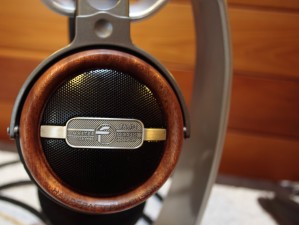 Without taking anything away from the outstanding FA-011s, the LEs are a brilliant upgrade. The wood used for the cups is beautiful, exotic and comes in 5 different varieties. The cable is much higher quality, and the APE-03 frequency filter refines the aggressive FA-011 sound to make it more balanced without sacrificing any of the dynamics and energy the 011s are known for. With just a brief listen I was impressed at how close in overall sound quality these came to the HD650s which cost about $70 more and are recognised as a benchmark headphone across the industry. The LEs aren’t better than the HD650s – they’re different. I’ll explain in more detail later, but the short version is that I turn to the HD650s for some things and the LEs for others – splitting them is a matter of preference and music style, not performance. I’d peg the LE as a more aggressive and dynamic equal of the HD650.
Without taking anything away from the outstanding FA-011s, the LEs are a brilliant upgrade. The wood used for the cups is beautiful, exotic and comes in 5 different varieties. The cable is much higher quality, and the APE-03 frequency filter refines the aggressive FA-011 sound to make it more balanced without sacrificing any of the dynamics and energy the 011s are known for. With just a brief listen I was impressed at how close in overall sound quality these came to the HD650s which cost about $70 more and are recognised as a benchmark headphone across the industry. The LEs aren’t better than the HD650s – they’re different. I’ll explain in more detail later, but the short version is that I turn to the HD650s for some things and the LEs for others – splitting them is a matter of preference and music style, not performance. I’d peg the LE as a more aggressive and dynamic equal of the HD650.
Truly Limited
Only 40 LEs were produced worldwide – 10 per timber for 4 timbers. Noisy Motel scored 12 of the 40 for Australia. There may be more being wrangled down here to Australia (via the Noisy Motel), but it will some of the original 40 units so these are a truly exclusive headphone!
Design & Comfort
The design and comfort of the LEs is almost identical to the stock FA-011s. They’re well put together (albeit with some slight variations as a result of being hand-made) and the materials all feel excellent. The design uses a sprung headband suspended below 2 rubber-clad metal bands which also house the cable from the left ear cup to the right. The cups are hinged for rotation inwards / outwards, but not any rotation. The design doesn’t really need anything more though as comfort is very good as is (possibly with different earpads) . 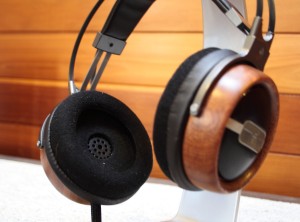 The LEs come with a new / different velour earpad which also has a fine acoustic mesh across the centre of the driver. Unfortunately, the LE pads are a bit thinner than the stock pads and become quite uncomfortable after a 1-2 hour listening session. This is because they don’t hold the cups far enough from my ears and leave the inside of the cup pressing against the outer edges of my ear. Thankfully, Billy from Noisy Motel was able to provide some replacement earpads from the stock FA-011s which instantly solved the problem and are very easy to fit with no tools or impact on headphones.
The LEs come with a new / different velour earpad which also has a fine acoustic mesh across the centre of the driver. Unfortunately, the LE pads are a bit thinner than the stock pads and become quite uncomfortable after a 1-2 hour listening session. This is because they don’t hold the cups far enough from my ears and leave the inside of the cup pressing against the outer edges of my ear. Thankfully, Billy from Noisy Motel was able to provide some replacement earpads from the stock FA-011s which instantly solved the problem and are very easy to fit with no tools or impact on headphones.
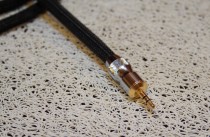 I have to say that I LOVE the upgraded cable on the LEs. It’s thick and heavy so it doesn’t tangle or get caught under my office chair wheels. It makes the LEs less portable, but they’re an open headphone so chances are you won’t walk around with them playing anyway (except at home and then it doesn’t matter). I don’t know if the core materials are any better than the stock 011s, but it looks good and feels good (and the headphones sound great so the cable can’t be too bad) so I’m happy!
I have to say that I LOVE the upgraded cable on the LEs. It’s thick and heavy so it doesn’t tangle or get caught under my office chair wheels. It makes the LEs less portable, but they’re an open headphone so chances are you won’t walk around with them playing anyway (except at home and then it doesn’t matter). I don’t know if the core materials are any better than the stock 011s, but it looks good and feels good (and the headphones sound great so the cable can’t be too bad) so I’m happy!
Sound
 It’s really hard to sum up the sound of the FA-011 LEs. They’re aggressive and “in-your-face”, but manage to do this without ever getting obnoxious, sibilant or fatiguing. The bass from the LEs is outstanding in terms of both texture, presence and extension. The bass goes low, is quick and tight, and has plenty of body. The top end is resolving and detailed, but not blistering. The mids are realistic, smooth and natural – not enhanced or emphasised at all to my ears. The LEs are a little confusing in that they separate sounds really well. There is no doubt where each instrument and performer is within the soundstage, but the soundstage is quite small. It extends roughly to the outside edge of each earpiece and doesn’t have a lot of height or depth. That said, it rarely feels crowded. One of my favourite test tracks is “Good Excuse” by John Butler Trio particularly because the recording allows some nice vertical (top / bottom) layers in the sound as well as the normal horizontal (left / right) layers. The LEs don’t really exhibit any vertical layering the way say the Unique Melody Miracles do, but Good Excuse is still a really enjoyable track to listen to on the LEs. Perhaps the most impressive attribute of the LEs is their ability to handle everything I’ve tried them with. They have the bass impact to rumble and thump when required, but also the detail and resolution for the subtleties and texture of more refined acoustic and classical tracks. If I had to criticize the LEs in any way, it’d be a slight glassy-ness or edge on some acoustic guitar tracks. The edge doesn’t sound natural because it’s not exactly how a guitar really sounds. It doesn’t sound bad or artificial (like some Ultrasones have that artificial metallic twang to the upper registers), but it just sounds like the sound has been altered ever-so-slightly from its natural sound.
It’s really hard to sum up the sound of the FA-011 LEs. They’re aggressive and “in-your-face”, but manage to do this without ever getting obnoxious, sibilant or fatiguing. The bass from the LEs is outstanding in terms of both texture, presence and extension. The bass goes low, is quick and tight, and has plenty of body. The top end is resolving and detailed, but not blistering. The mids are realistic, smooth and natural – not enhanced or emphasised at all to my ears. The LEs are a little confusing in that they separate sounds really well. There is no doubt where each instrument and performer is within the soundstage, but the soundstage is quite small. It extends roughly to the outside edge of each earpiece and doesn’t have a lot of height or depth. That said, it rarely feels crowded. One of my favourite test tracks is “Good Excuse” by John Butler Trio particularly because the recording allows some nice vertical (top / bottom) layers in the sound as well as the normal horizontal (left / right) layers. The LEs don’t really exhibit any vertical layering the way say the Unique Melody Miracles do, but Good Excuse is still a really enjoyable track to listen to on the LEs. Perhaps the most impressive attribute of the LEs is their ability to handle everything I’ve tried them with. They have the bass impact to rumble and thump when required, but also the detail and resolution for the subtleties and texture of more refined acoustic and classical tracks. If I had to criticize the LEs in any way, it’d be a slight glassy-ness or edge on some acoustic guitar tracks. The edge doesn’t sound natural because it’s not exactly how a guitar really sounds. It doesn’t sound bad or artificial (like some Ultrasones have that artificial metallic twang to the upper registers), but it just sounds like the sound has been altered ever-so-slightly from its natural sound.
HD650 vs FA-011 LE Comparison
 I bought the LEs after listening to my HD650s all day. That, and the fact that they’re in the same price ballpark make it an obvious comparison so here are some thoughts based on some track-specific comparisons. I’m focussing on what stood out to me during each track rather than a blow-by-blow description of each headphone’s sound. Please refer to my HD650 review if you’d like more information about the specifics of the HD650.
I bought the LEs after listening to my HD650s all day. That, and the fact that they’re in the same price ballpark make it an obvious comparison so here are some thoughts based on some track-specific comparisons. I’m focussing on what stood out to me during each track rather than a blow-by-blow description of each headphone’s sound. Please refer to my HD650 review if you’d like more information about the specifics of the HD650.
Stuffy – Arne Domnerus from Jazz at the Pawnshop (192kHz / 24-bit)
This is a great recording in a jazz club so there’s plenty of ambience and space in the recording. There are also plenty of natural textures and resonance in the sound so it’s easy to hear how naturally the headphones portray all the instruments and the space around them.
- HD650s – more space and ambience let’s you hear the jazz club surrounds, but the sound is a little muted in comparison to the LEs.
- FA-011 LEs – cleaner highs and details – cymbals have texture and presence and the piano is more “present” in the sound mix, but at the expense of some ambience.
Switching between the 2 headphones I preferred the sound signature of the LEs. I’ve never before been a supporter of the Sennheiser “veil” description, but I can kind of understand it now. I don’t think the HD650s are bad by any stretch (they’re a wonderful headphone) – their laid back presentation is a large part of their charm and the space and ambience they create in the soundstage is brilliant, but there are times that I crave the clarity and definition of a can like the LEs.
Sinking Stone – Alison Krauss & Union Station from Paper Airplane (96kHz / 24-bit)
This track is light on bass and high on acoustic sounds in the upper mid-range which is possibly the weak point for the LEs.
- LEs – as expected, the LEs sound a little glassy and fragile with this track, but shows better textures in the vocals. In particular, the male backing vocal is more noticeable and clear, but isn’t enhanced or pushed forward, just well-placed and separated from the other sounds.
- HD650s – creamier mids and slightly more enjoyable overall even though the backing vocal isn’t quite as well separated. For tracks like this I would always reach for the HD650s.
The summary is pretty clear here. The HD650 excels with the acoustic instruments (guitars, etc.) and vocals while the LE is a bit glassy despite being wonderfully detailed.
Within – Daft Punk from Random Access Memories (44.1kHz / 16-bit)
This track has a nice range of different sounds including piano (always tough to recreate authentically), drums and other percussion, deep bass, and electronic vocals.
- HD650s – once again the HD650s create more space and on this track also separate the vocals really well so they’re prominent and clear.
- LEs – the snare is alive and the bass has presence and impact. The chimes have sparkle and clarity that the HD650s can’t match.
The LEs won this battle on the strength of their bass and treble performance. This track covers the whole range so completely that the HD650s sound a little bland in comparison to the LEs’ outstanding extension in the bass. The space and ambience of the HD650s don’t have enough impact in a track like this to offset the frequency range performance.
Good Excuse – John Butler Trio from Grand National (44.1kHz / 16-bit)
- LEs – layering and textures are excellent. Excellent separation of percussion, piano, and other instruments
- HD650s – I can’t believe I’m using this word, but they sound a bit veiled (in comparison only). The HD650s are smooth and present more space, but lack some impact down low. The details merge together a bit compared to the LEs, but I think a lot of that is due to the fact that much of the detail in this track comes from acoustic guitars and percussion.
The LEs performed surprisingly well on this track given the heavy use of acoustic guitars and other instruments that dwell in the upper mid-range that can be the LEs weak point. I think the full-range sound in this track off-sets the potentially glassy upper registers of the FA-011 LE.
It’s really important to note here that the HD650 improves significantly on Crack!
What I mean by that is that these tests were conducted driving both headphones from the Audio-gd NFB-5.2. My normal amplifier for the HD650s is the Bottlehead Crack and it has a magic synergy with the HD650s. When I tested the HD650s on this same track but using the Crack, the results were quite different. I would probably still choose the LEs for their bass response and detail, but the separation of instruments and textures became much better with the HD650 / Crack combination.
Violin Concerto in G Major – Marianne Thorsen / Trondheim Solistene from HD Tracks (96kHz / 24-bit)
I thought it was important to test these 2 on some really well recorded classical music. An orchestral or chamber group presents a lot of similar information all at once (i.e. multiple similar instruments versus guitar, drums, bass, etc. which are all different). This makes it a different sound experience. Oh, and because a lot of people like to listen to classical so I thought they’s like the comparison.
- LEs – the sound is more natural, clean and resolving, but like standing on the conductor’s podium where there’s not a lot of space between me and all the musicians
- HD650s – much better sense of space, but not as intimate – I feel removed and placed back in the audience somewhere
This was a great test to finish on because it sums up these 2 headphones perfectly. The LEs once again presented more detail, texture and clarity – a more dynamic overall experience, but I felt like I was listening to a good set of headphones – I couldn’t get completely lost in the music. The HD650s once again excelled with the space and ambiance they presented. I felt like I was in the audience listening to the performance which was great, but I felt like I was a couple of rows too far back and that the sound was being muffled slightly by the people and seats in front of me.
Conclusions
This has been a slightly frustrating review because it’s shown me that the ultimate headphone in the $400-ish price range is actually a combination of the HD650 and FA-011 LE. The HD650 outperforms the LE in terms of soundstage size and ambiance while the FA-011 LE outperforms the HD650 in terms of detail, clarity and overall frequency balance (including its awesome bass response!)
So what does that mean for this review and for my headphone collection?
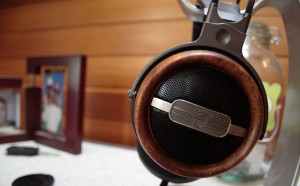 It means I will happily keep both headphones in my collection. The HD650s have earned an unassailable place in audiophile lore for good reason. They’re not a perfect headphone from a technical perspective, but they are wonderfully easy to listen to and create an amazing ambiance in the music.
It means I will happily keep both headphones in my collection. The HD650s have earned an unassailable place in audiophile lore for good reason. They’re not a perfect headphone from a technical perspective, but they are wonderfully easy to listen to and create an amazing ambiance in the music.
The FA-011 LEs, the star of this show, are an incredibly enjoyable headphone. They perform at every part of the frequency range, they provide superb bass impact, texture and speed, and great detail and clarity. Perhaps most amazing is their ability to do all this without causing any fatigue. Yes, they’re in-you-face and aggressive, but in the most likable way somehow. I haven’t enjoyed bright, analytical headphones for a while now because of some treble sensitivity, but the LEs manage to deliver all their detail and clarity without any fatigue or discomfort.
I think there are some great headphones around this price point (HD6X0, HE-400, DT880, etc.) and the LEs definitely deserve a seat at that table. They are enjoyable, dynamic and revealing, but never inducing of fatigue or discomfort. The provided pads are best changed for stock pads if possible for more physical comfort, but it’s a simple switch.
I would recommend these to people wanting an open headphone which doesn’t sacrifice on bass or overall tonal balance (i.e. they’re not bass monsters, just brilliantly balanced across all frequencies). I wouldn’t recommend them to people seeking large soundstages, but I know some prefer the intimacy of a tighter stage. Remember the LEs don’t lack separation and layering of sounds, just overall space in the soundstage. They are everything the stock FA-011s are known for only better in every way!

